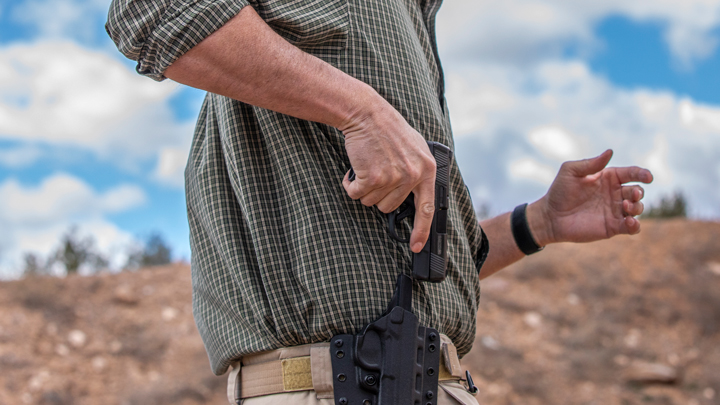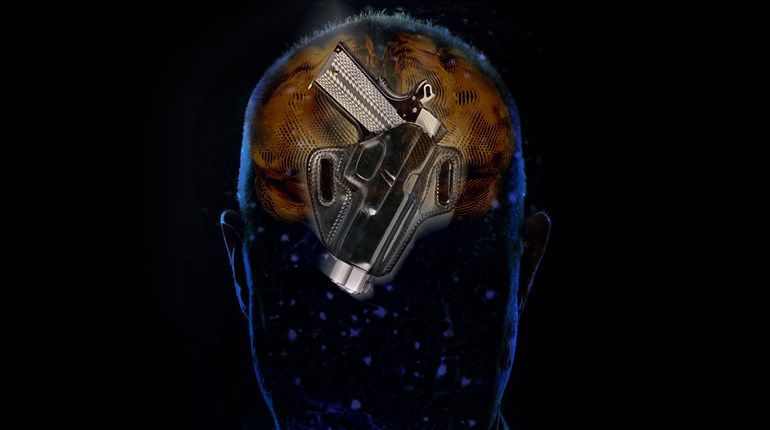
Controlling the transition point from proactive to active measures, what are the priorities to safely stepping off that fateful "X"? How can you avoid being too slow in trying to regain the initiative in a real world violent physical altercation?
Lights, Camera, Action
The term “get off that ‘X’” hails from the executive protection community.
Originally a film production term at the turn of the 20th century, the “X” was formed by two pieces of rigger’s tape crossed on the stage floor designating the exact spot the actor(s) needed to stand to be in the most effective position for the lights, camera and eventually sound.
It was later adopted by the U.S. Secret Service in reference to the ‘package’ or protectee(s) standing in the most vulnerable position exposed to potential assassins, moving vehicles and other physical threats. In the event of an undesired incident the primary objective was (and still is) to move everyone, especially the protectee, off and away from the ‘X’ to a physical position of greater relative safety and at the lowest scale of injury possible.
The same applies to this very day. Should it hit the fan, it’s imperative that you and anyone else with you move off that fateful ‘X’ and to safety.
Having the need to move off the ‘X’ means that you are behind the action/reaction power curve and reacting to a clear and present danger. It also means that you have relinquished the tactical initiative to your adversaries. How can you regain that initiative and move with combat effective speed?
Soft Skills Versus Hard Skills
Dissecting one tactical problem at a time, how can you keep yourself at the forefront of that action/reaction power curve and maintain the initiative?
Before it ever even becomes a physical altercation requiring hard skills, such as defensive tactics or a possible shooting solution, it initiates as a soft skills scenario.
Utilizing good situational awareness when moving with a protectee, is what allows you stay ahead of the curve, increases your tactical response options and affords you optimal response time being able to “read the need” should things convert from proactive measures to active measures.
In addition to using good situational awareness to maintain visual and mental control of your immediate environment, having a plan is essential to mission success. Tucked away in the the back of your mind, you’ve already run through where you’re going to move, what you’re going to do and how you’re going to do it.
Behind the Curve
Failing proactive measures, like good situational awareness and pre-event planning, you may find yourself behind the curve and forced into reactive measures like moving off the 'X.' In this situation time is not on your side so you are pressed into making the most effective use of your time.
Time on the 'X' in a real-world altercation is quantifiable. The industry standard is 2 seconds. Why? Because that is the average amount of time it takes for a military-age male between the ages of 18 and 32 to close the distance of about 10 yards (30 feet). It is also the reason why most peace officers’ standards of training require law enforcement to present (draw) their service pistols from a level-one retention holster in 2 seconds or less in an agency firearms qualification.
Your time on the 'X' can be no longer than two seconds or your potential for serious bodily injury and death increase exponentially with every second thereafter. The “A” answer is to move off that 'X’ and move with alacrity.
Pre-planning saves you considerable time. Know where and how to get to pre-identified cover is critical. Know where and how to get to an exit. Know where and how to get to ground, air, or water transportation.
Hard Target
A moving target is a more difficult target to hit than a stationary one. Unless you’re pinned down behind cover, stay mobile and be relentless in your movement away from the 'X.' The 'X' moves with you. The spilt second you stop, that one-square-foot of real estate you’re occupying right now becomes the new 'X' from which you’ve got two seconds or less to move and toward a safer physical position.
In an urban environment such as a restaurant, you know there’s a front door entrance and a back door exit in almost every kitchen. Walk into the building and immediately identify what can be utilized as good enough cover to stop rifle rounds. Once you’ve identified your exists (to include breaking glass windows) and your nearest positions of cover, then take a moment to plan on exactly how you will usher yourself, and your protectee(s), to and from those hard point positions and eventually to the nearest exit. Time is of the essence as you have a 2-second immediate action window.
You can keep a potential threat under control by applying your soft skills and control your transition from proactive to active measures by preplanning and maintaining good situational awareness.
Your priorities in moving off that 'X' are time and advantageous physical position. Every tenth of a second matters and you can save that valuable time by identifying your pre-planned movement areas and how to get to them prior to the onset of an undesired event.





































